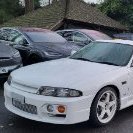Rust on the wheel wells - should i be concerned?
Announcements
-
Similar Content
-
Latest Posts
-
I'll say bad things about the shit lottery that is Yellow Jackets.
-
Yes, those exactly, either angled, or straight ones. I just dug one of my f**ked up old stock arms out of the crap box. 2 views, showing nipples added in places where they were accessible while installed at both ends of the arm, without clashing with anything else on the car (ie the upright, the inner guard, etc). Circled in red.
-
Don't think that can fit in physically. Are you referring to this? If it happens again, I'm going to get the nismo ones.
-
I bought the 1/18 scale celica and nsx from Justin and they are very detailed and good quality. I will definitely be interested in others in the series as they come out



Recommended Posts
Create an account or sign in to comment
You need to be a member in order to leave a comment
Create an account
Sign up for a new account in our community. It's easy!
Register a new accountSign in
Already have an account? Sign in here.
Sign In Now